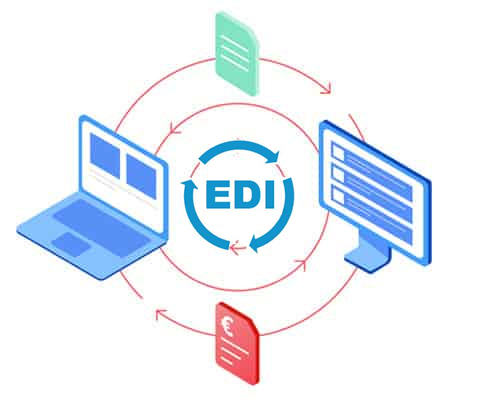
EDI BASICS 101:
EDI Basics 101: Understanding Electronic Data Interchange
In today’s fast-paced digital landscape, businesses rely on efficient systems to exchange information seamlessly. One of the most effective methods is Electronic Data Interchange (EDI)—a technology that has been the backbone of supply chain automation and inter-business communication for decades.
If you’re new to EDI, this blog will provide you with a foundational understanding of what it is, how it works, and why it matters for businesses today.
What is EDI?
Electronic Data Interchange (EDI) is the structured transmission of business data between organizations in a standardized electronic format. It replaces paper-based documents such as purchase orders, invoices, and shipping notices, enabling faster and more accurate communication.
For example, instead of manually mailing or emailing an invoice, an EDI system can send it automatically from one company’s system to another in a format both can understand.
How Does EDI Work?
EDI systems use standardized formats to exchange data. Here’s a breakdown of the process:
1. Data Preparation
The sender’s system collects and organizes the necessary information for the document (e.g., an invoice).
2. Translation to EDI Format
The data is translated into a standard EDI format using EDI software. Common standards include:
• ANSI X12 (used in North America)
• EDIFACT (used internationally)
• XML or other modern formats
3. Transmission
The formatted EDI document is securely transmitted to the recipient using methods such as:
• Value-Added Networks (VANs)
• AS2 (Applicability Statement 2, a common internet-based protocol)
• FTP or sFTP
4. Receipt and Translation
The recipient’s system receives the document and translates it back into a usable format for their system.
5. Processing
The data is integrated into the recipient’s business systems, like ERP (Enterprise Resource Planning) software, for processing.
Benefits of EDI
Implementing EDI can offer numerous advantages to businesses:
1. Increased Efficiency
Automating document exchange saves time and reduces manual data entry errors.
2. Cost Savings
Eliminating paper, postage, and manual processing leads to significant cost reductions.
3. Faster Transactions
Documents are transmitted and processed in real-time, speeding up operations like order fulfillment and invoicing.
4. Enhanced Accuracy
Standardized formats and automation minimize errors caused by manual handling.
5. Improved Relationships
Efficient communication strengthens partnerships between trading partners.
EDI Standards and Protocols
EDI relies on standardized formats and communication protocols to ensure compatibility.
Common Standards:
• ANSI X12: Widely used in North America.
• EDIFACT: Standard for international trade.
• TRADACOMS: Primarily used in the UK retail industry.
Transmission Protocols:
• AS2: Secure internet-based transmission.
• VANs: Third-party networks providing secure data exchange.
• sFTP/FTP: Direct transmission methods over the internet.
EDI in Action
Industries that rely heavily on EDI include:
• Retail: For orders, shipping, and inventory updates.
• Manufacturing: For supply chain automation and production planning.
• Healthcare: For claims processing and patient records.
• Logistics: For shipment tracking and customs declarations.
Getting Started with EDI
If you’re considering EDI for your business, here are the steps to begin:
1. Identify Your Needs: Understand the documents and processes you want to automate.
2. Choose an EDI Solution: Options include in-house systems, cloud-based solutions, or managed services.
3. Select Standards and Protocols: Determine which formats and transmission methods suit your trading partners.
4. Onboard Partners: Work with your trading partners to set up and test the system.
5. Monitor and Optimize: Regularly review your EDI operations for performance and compliance.
Conclusion
EDI is a powerful tool that can transform how businesses communicate and operate. By automating and standardizing data exchange, EDI ensures efficiency, accuracy, and cost savings. Whether you’re a small business or a multinational corporation, understanding the basics of EDI is the first step towards streamlining your operations and staying competitive in the digital age.
Ready to dive deeper into EDI? Start exploring solutions tailored to your industry and trading partners today!


